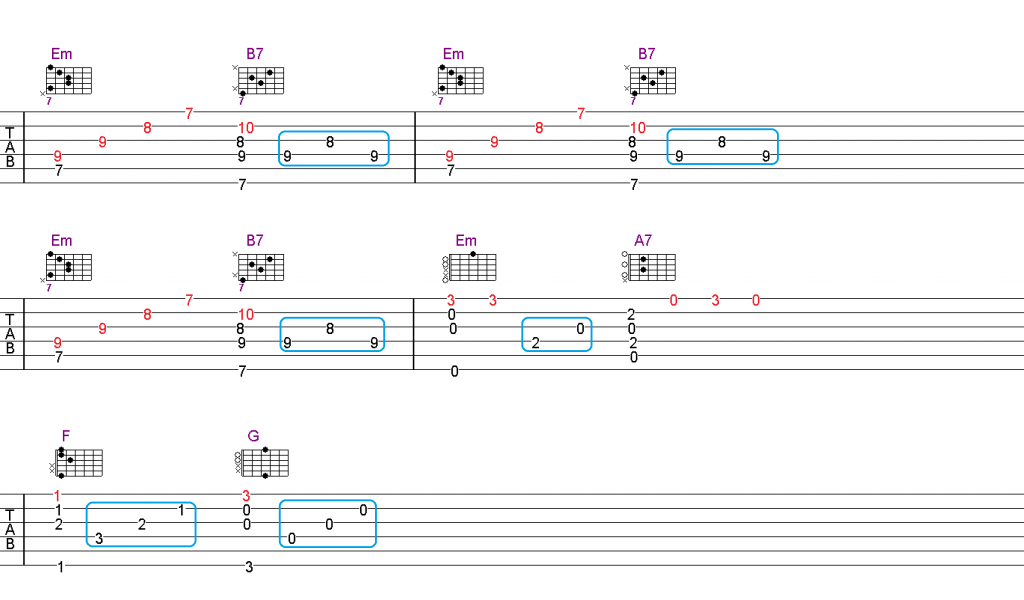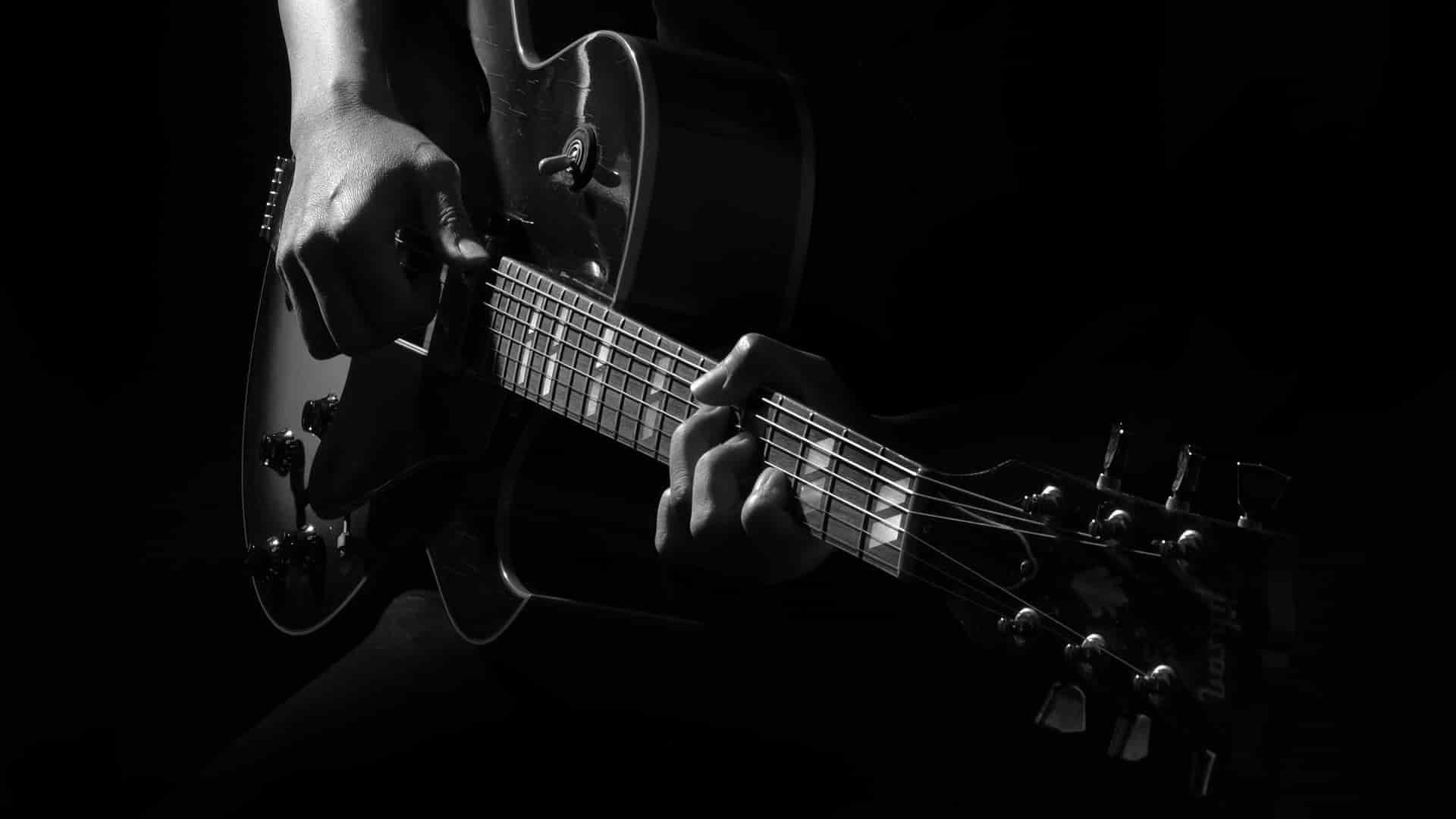GSCC Lesson 16
Past Lessons Summary and Links
If you are new to this series, here’s the links to past lessons:
We had covered all the family chords and their siblings in key of C and G Major:
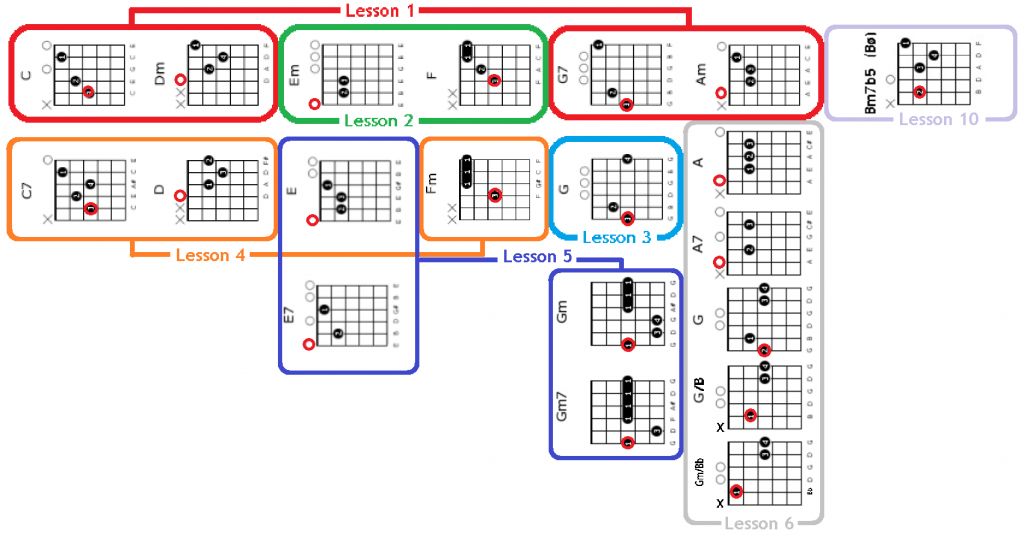
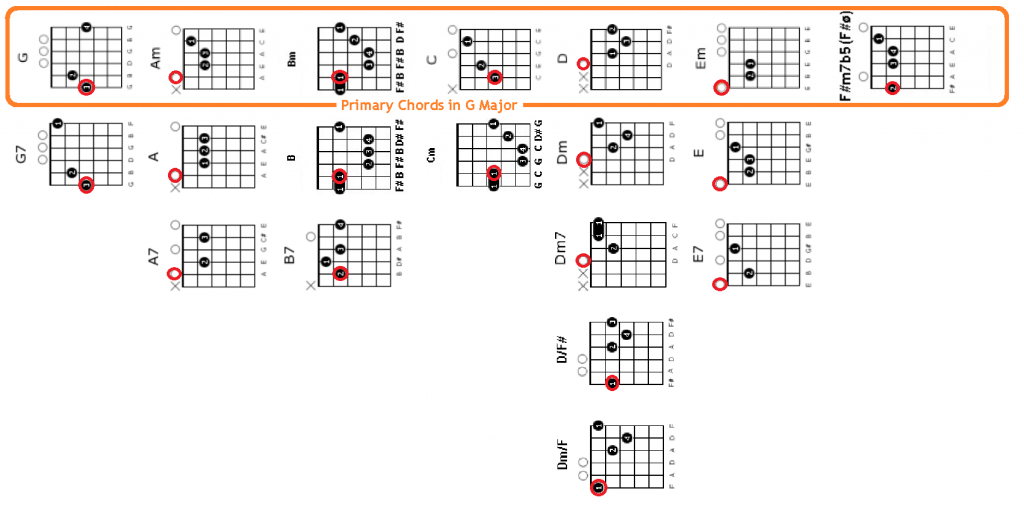
Key of C major and G major are common keys used by guitarist to play sing-along guitar.
We also looked at the guitarist best friend – CAPO , and it’s application.
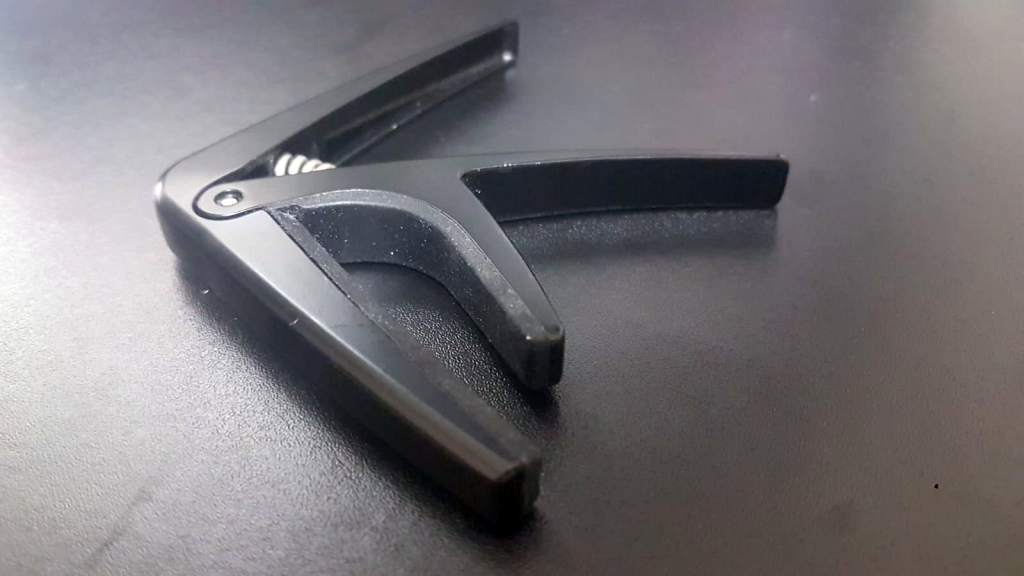
When we use the CAPO in conjunction with chords from C and G keys above , we are able to play almost every pop songs we wanted to play.
We have also looked at some basic strumming patterns:
| 1 | One strum per beat |
| 2 | Up-stroke strumming |
| 3 | Strumming lightly on first few strings |
| 4 | 16 beat strum |
| 5 | Campfire Strum |
| 6 | “Chuck” Strum |
| 7 | 3/4 Strum |
| 8 | 6/8 Strum |
And we had explored some basic pluckings.
| 1 | 8 beat pluck #1 |
| 2 | Double string pluck |
| 3 | 3/4 Pluck |
| 4 | “Alternate Bass” Pluck |
| 5 | 6/8 Pluck |
| 6 | Slap Rhythm |
And of course, we had fun learning all these songs !! They are specially produced “Karaoke for Guitar” videos (only vocal and metronome count) for you to practice your strumming / plucking:
Last week, we looked at how to put together a simple chord melody guitar song,
Here’s the concept behind chord melody guitar playing!
Step 1: Play the melody
Step 2: Find out the chords
Step 3: Combine the melody and the chords
Step 4: Add in the accompaniment
We demonstrated it using “Can’t Help Falling In Love” as the example.
Click here to ask a question …
Let’s try what we learned last week on another song
Let’s try it on a classic Chinese song : “月亮代表我的心”
Again, we will go through the following steps:
Step 1: Play the melody
Step 2: Find out the chords
Step 3: Combine the melody and the chords
Step 4: Add in the accompaniment
Click here to ask a question …
Step 1: Play the melody
Let’s learn to play chord melody guitar of the song “月亮代表我的心”.
First, learn and play the melody:
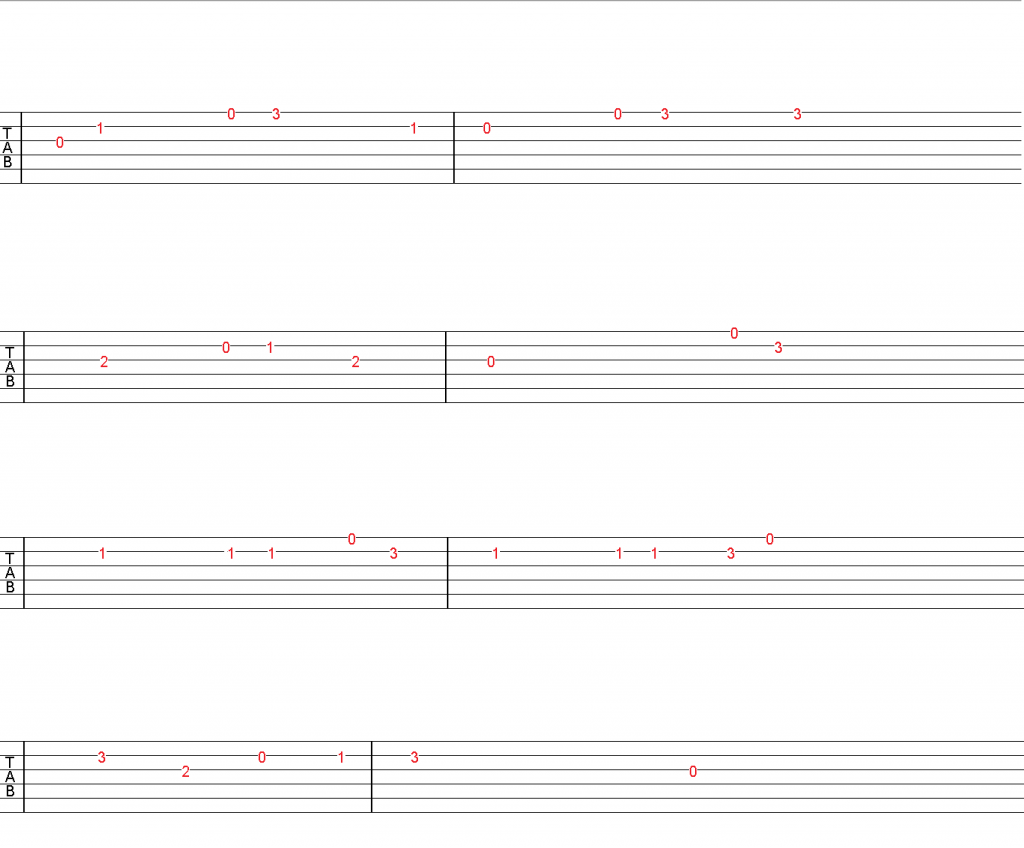

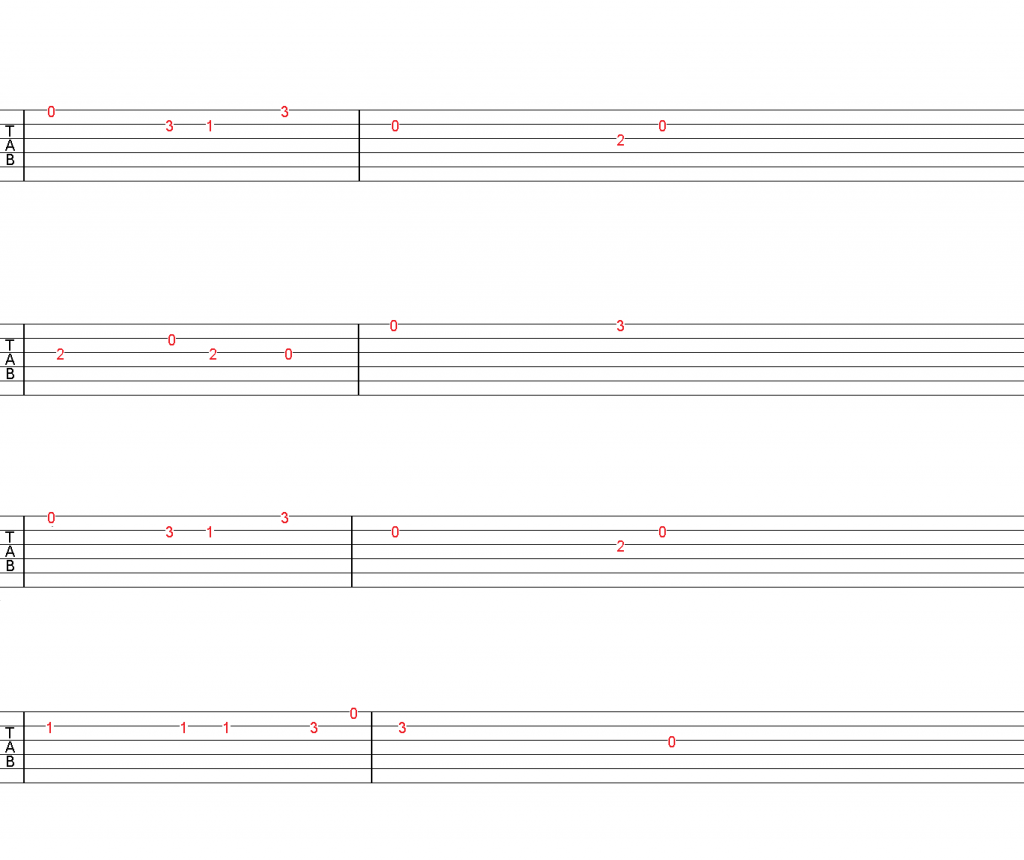
Click here to ask a question …
Step 2: Find out the chords
You can either get them online or use your ears!!
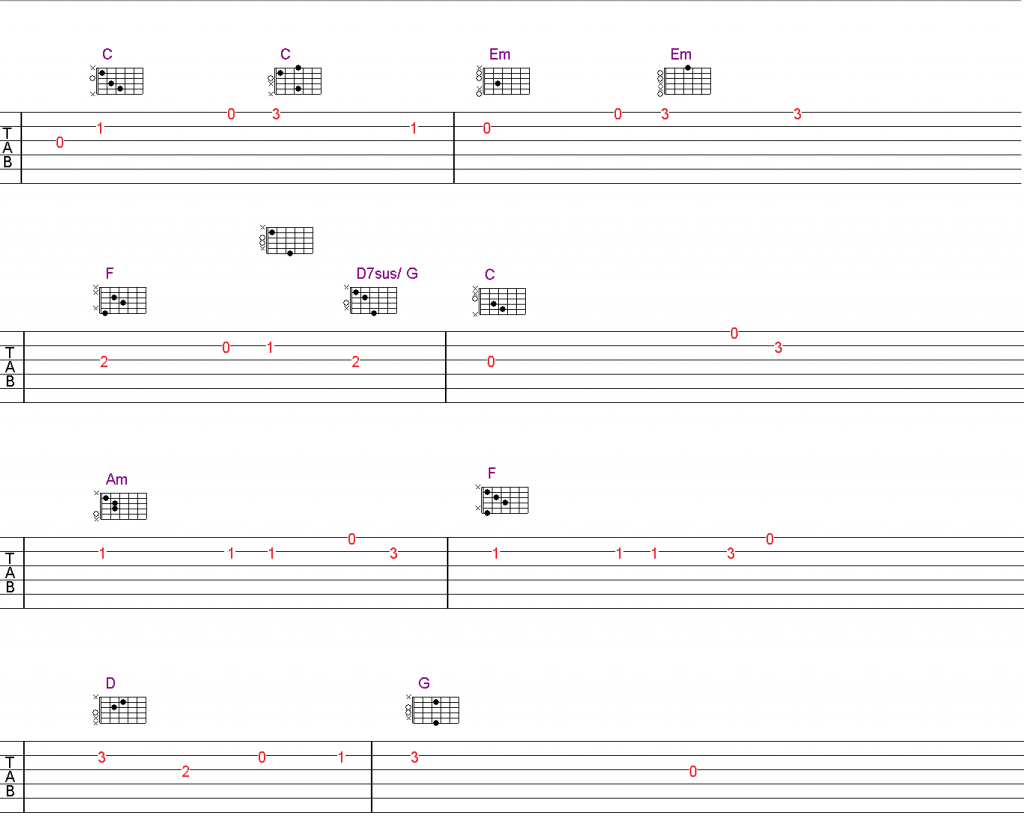
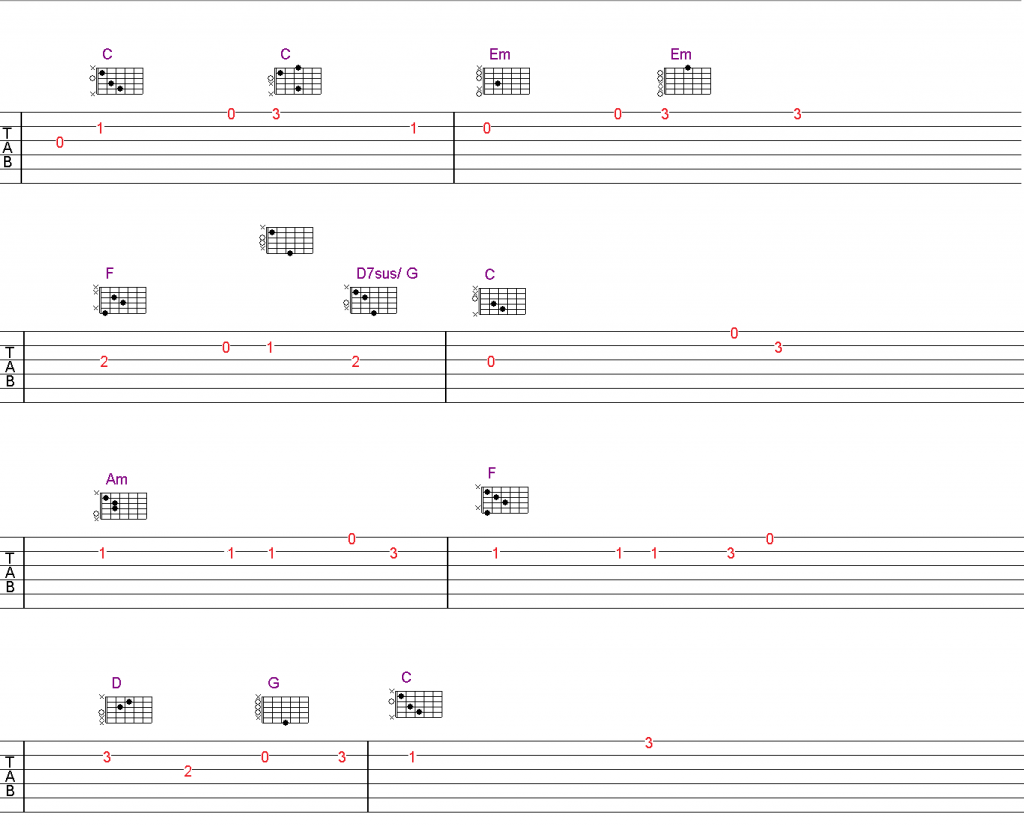
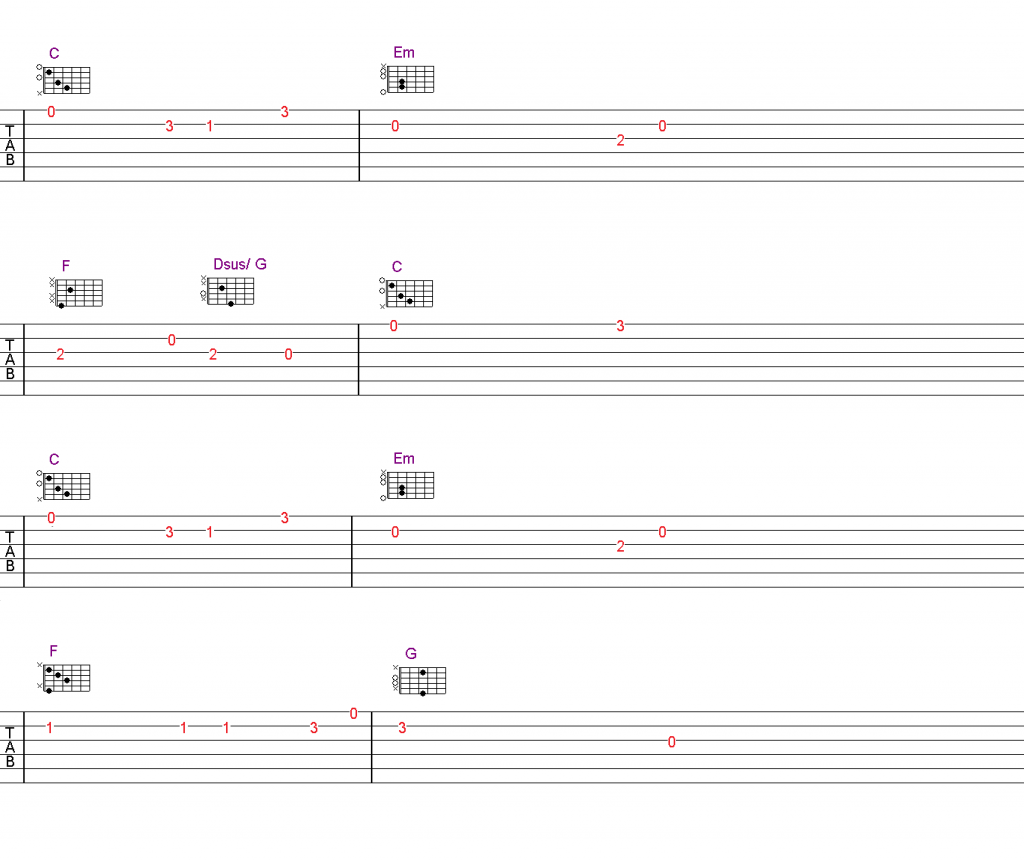
Click here to ask a question …
Step 3: Combine The Melody And The Chords
Let’s combine the melody and the chords.
As we mentioned in last week lesson, the trick is to play the chords “below” the melody notes. This means we are gonna play part of the chords.
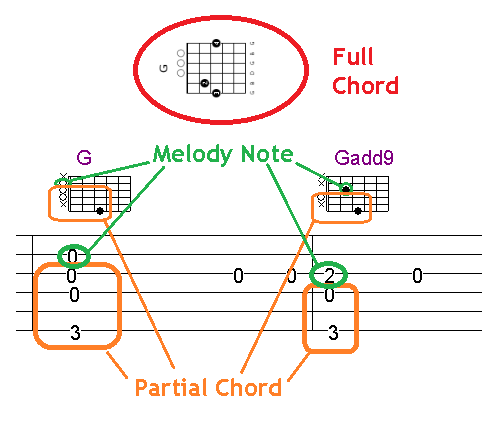
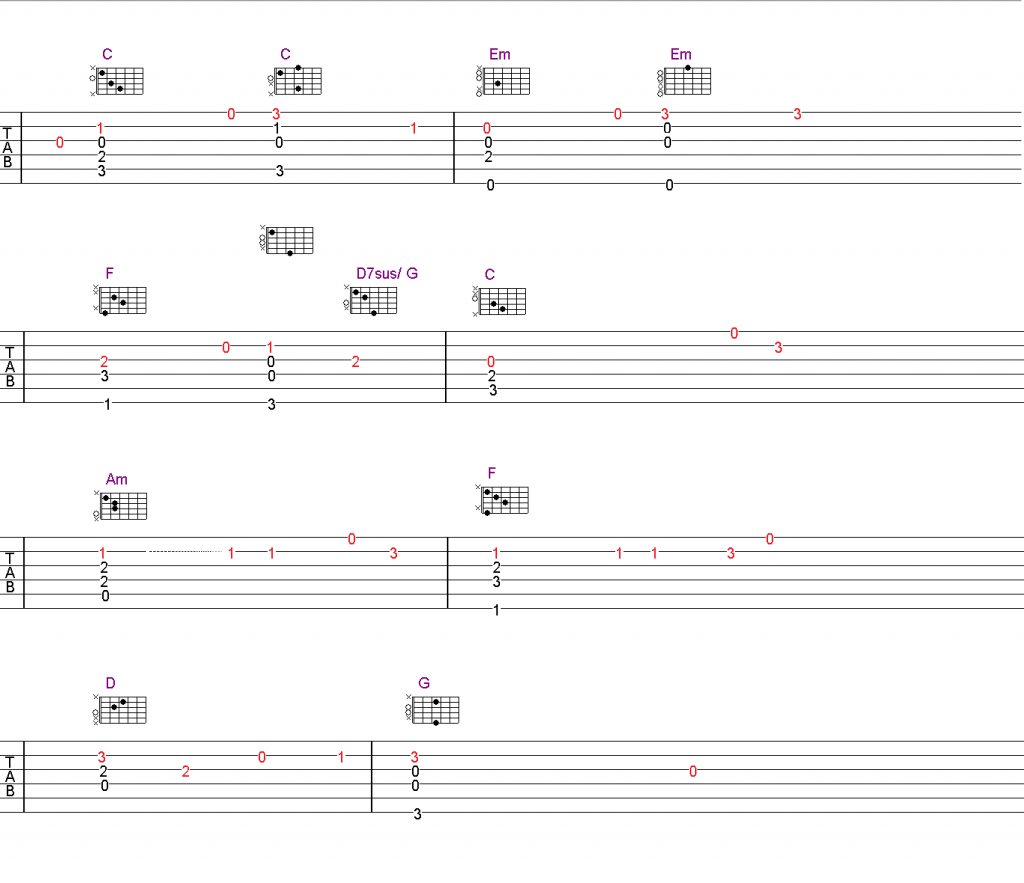
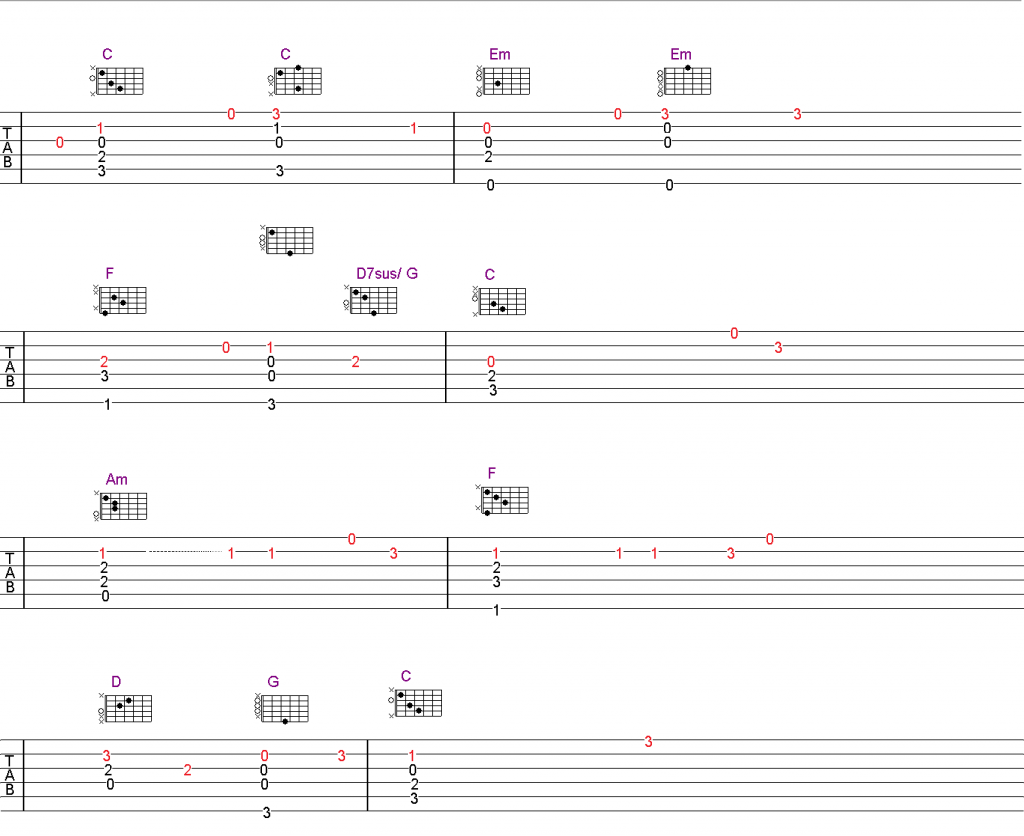
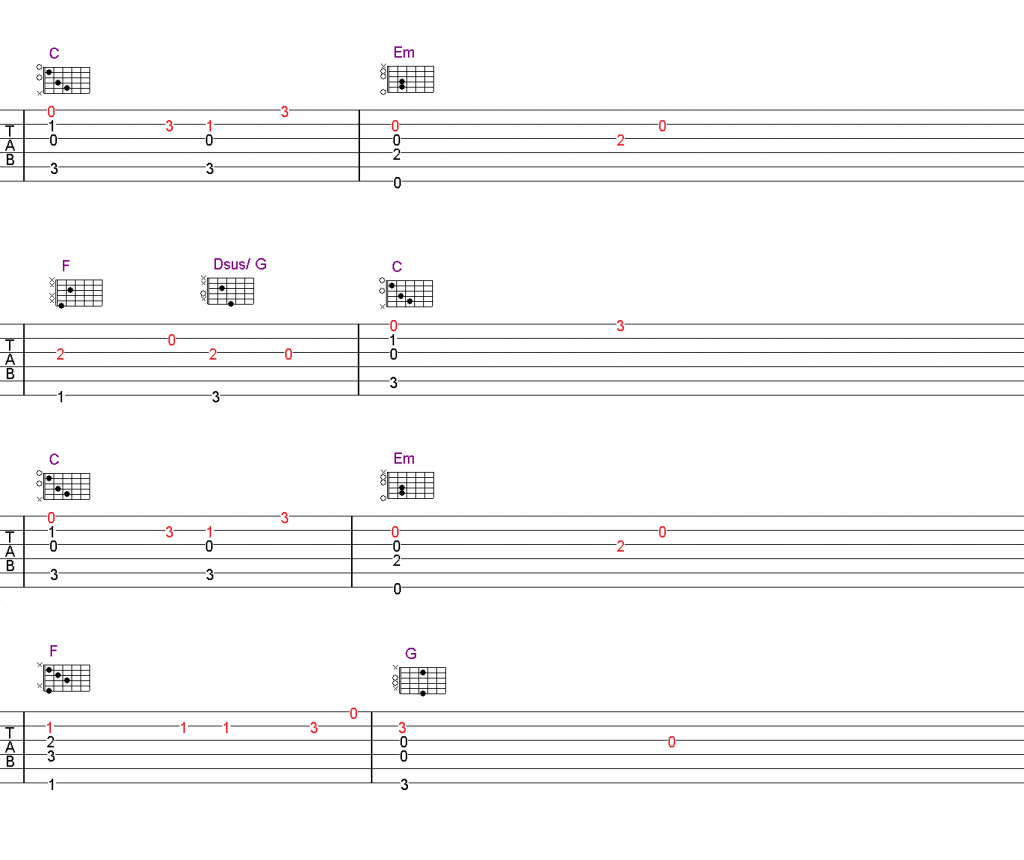
Click here to ask a question …
Step 4: Add In The Accompaniment
Yeah! We have the melody and the chords!!
Let’s make it more complete by filling in the gap between the melody.
We can fill in the gap by playing the plucking accompaniment just like we are accompanying someone to sing:
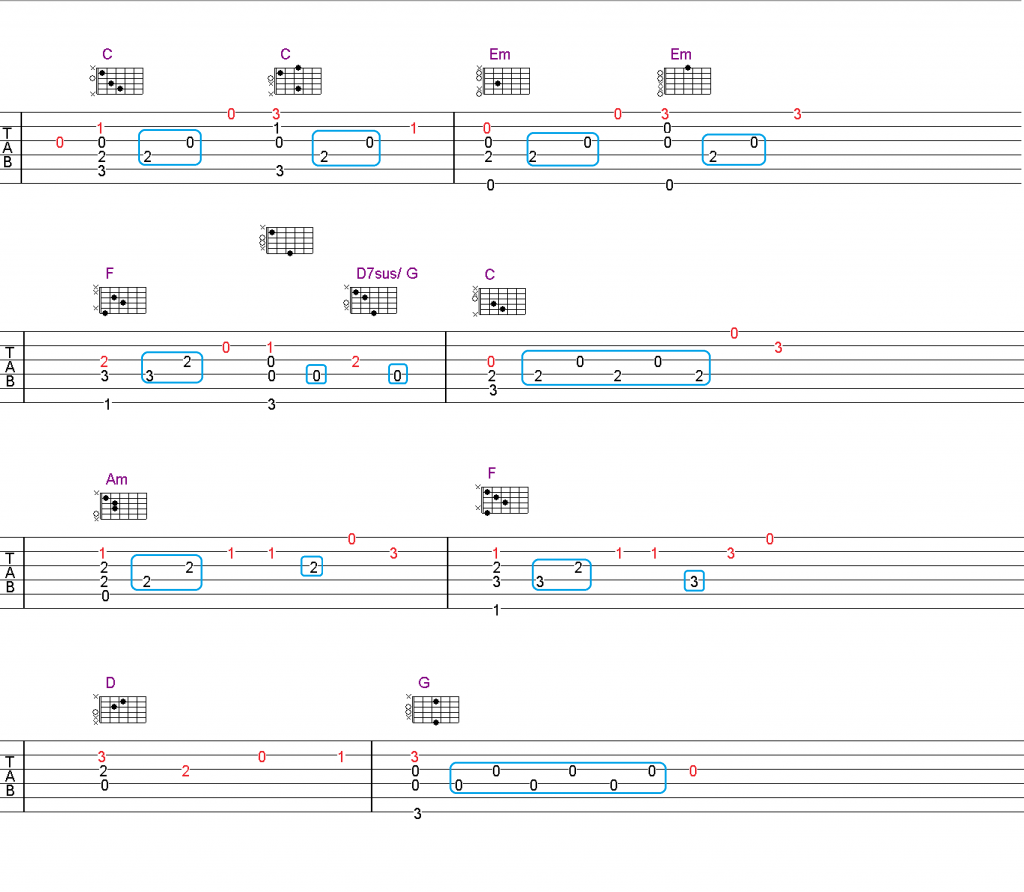
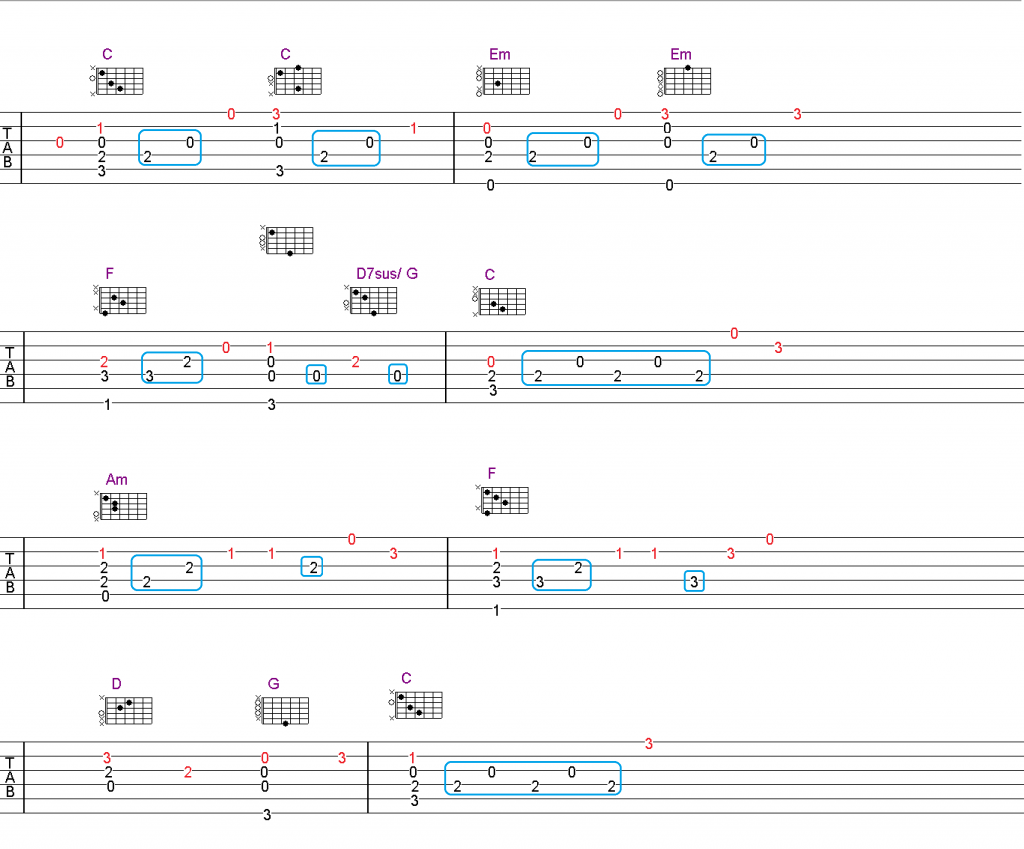
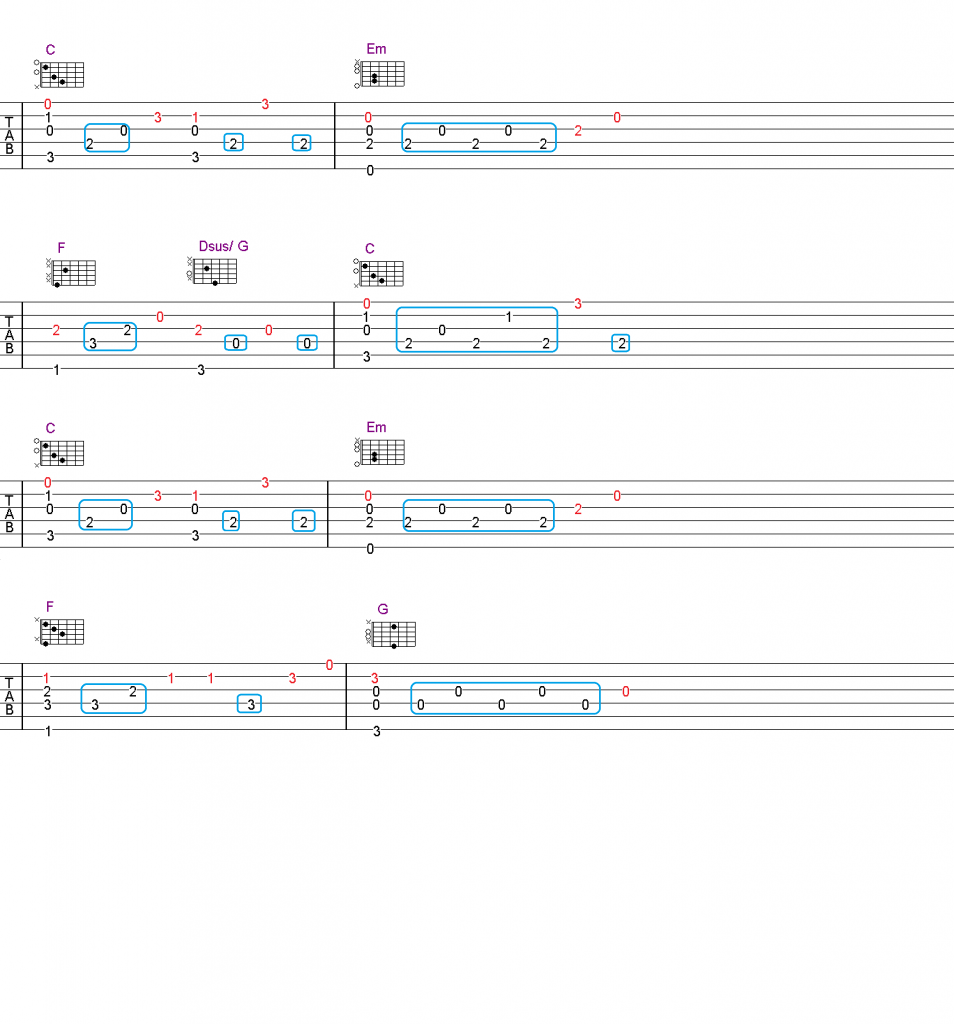
Click here to ask a question …
Issues in last 2 songs we learned
You may noticed there are some issue on last 2 songs we learned:
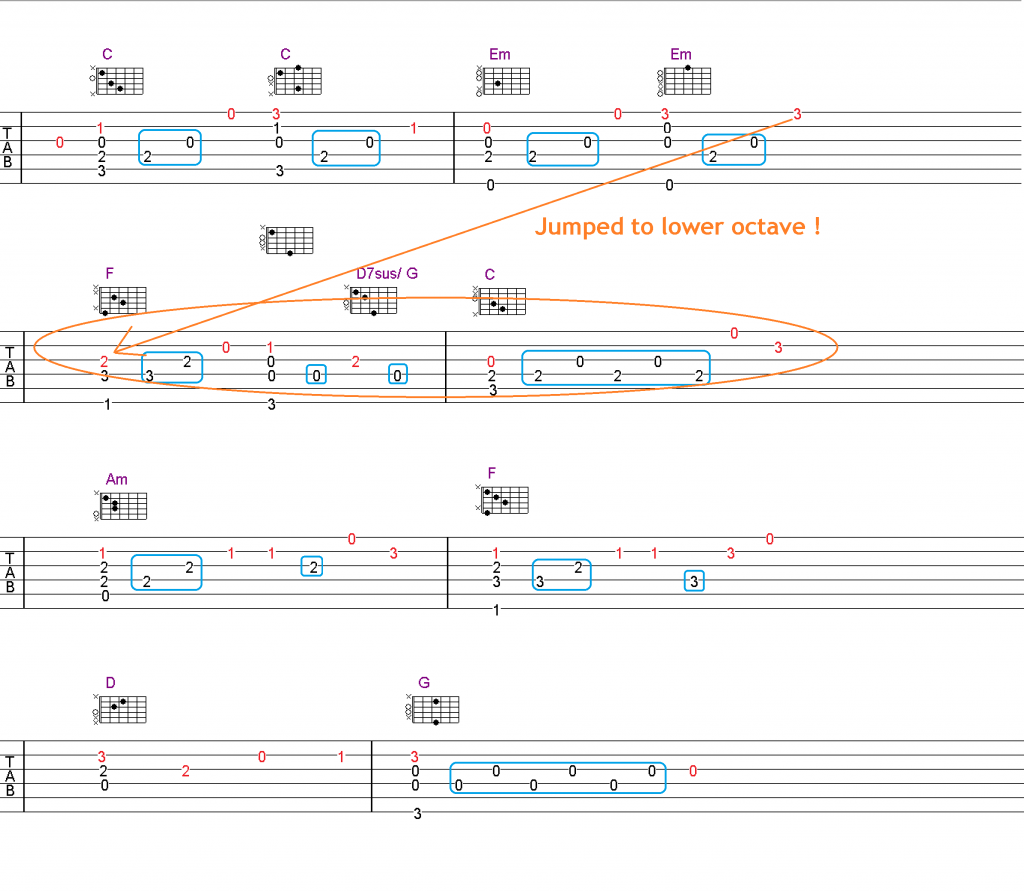
Yes, the notes jumped to a lower octave, where it should go higher.
Same thing happened to the chorus of last week’s song:
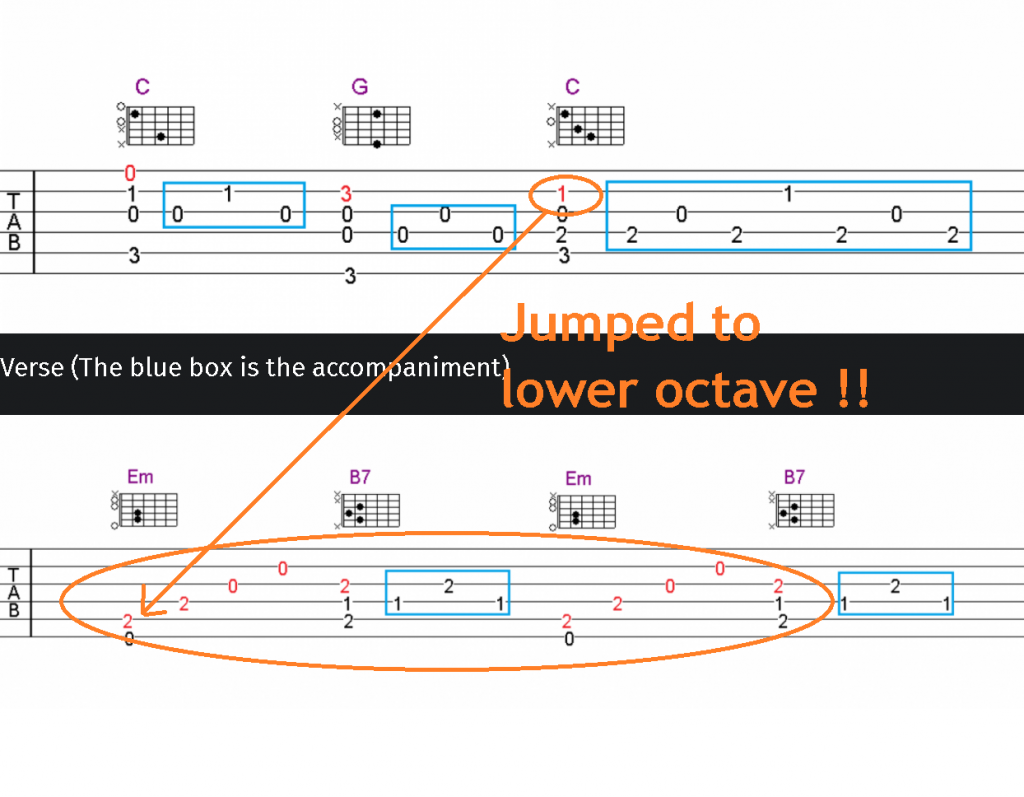
That was because we are running out of notes … or , rather, we only mastered the notes for the 1st 3 frets. So, we play the higher notes on lower octave.
So, how can we go higher?
To The Infinity And Beyond!!
First step, is to venture out!! Or, UP!
In the past , we had learn the notes of C Major scale for the 1st 3 frets
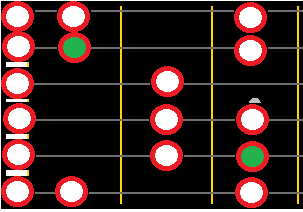
Which is also this:

Here’s all the notes on the fretboard:

Let’s filter out all the non C Major notes, here is all the C Major notes on the guitar fretboard:

That’s a lot of notes!!!
Yes, it is ….
Don’t quick, I’ll show you a easy way (which build on things you already know) to play notes and chords beyond the 1st 3 frets.
Enter the “CAGED” system!!
Click here to ask a question …
CAGED system
What is the CAGED system?
It is a system based on “C” chord, “A” chord, “G” chord, “E” chord and “D” chord, thus C-A-G-E-D 😉
| C | A | G | E | D |
 | 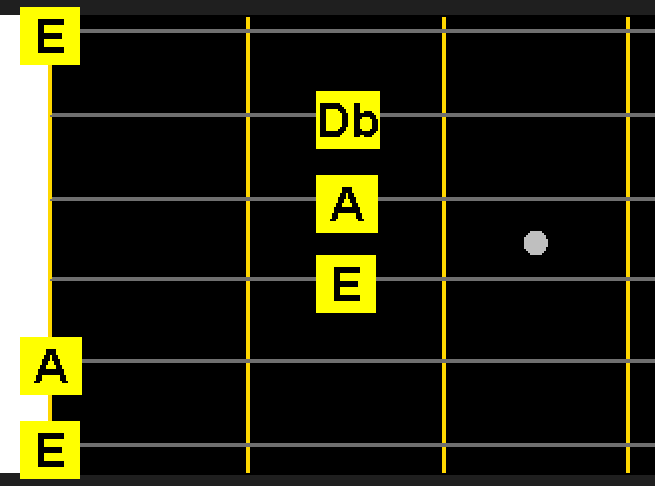 | 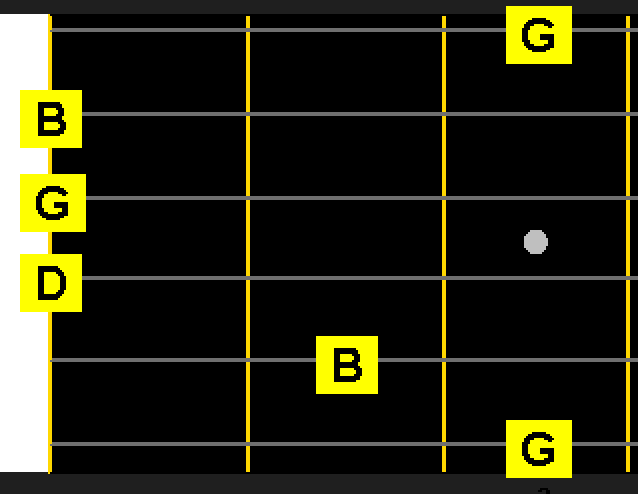 | 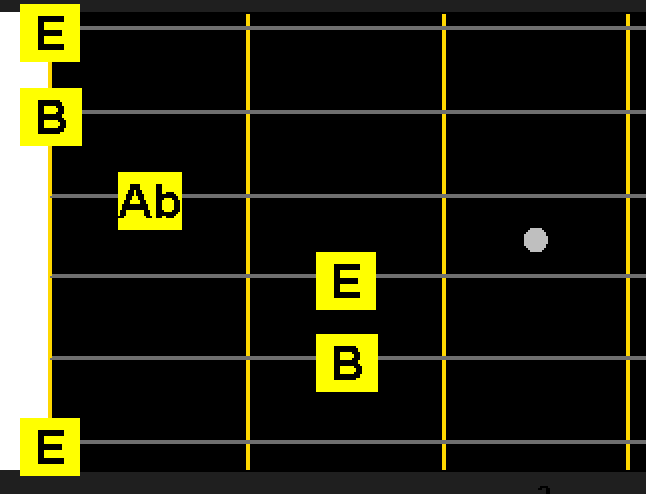 | 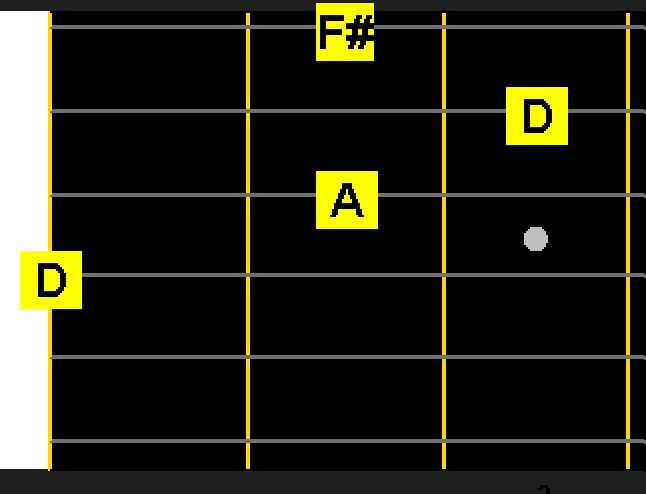 |
If we take the “Chord” :

Move it to the right, and use our index finger as the “capo” :

We got a C# chord!!!
This is just like putting a capo on the 1st fret, making the “C” chord into a C# chord. But, this time , we are using our index finger to act as a CAPO!!
How about we up another step?

We got a D chord!!!
So fun!! Let’s go up, up and away!!!







So, up until now we are using “C” shape chord to move up the fret board and producing different chords!! We were only using 1st member of the “CAGED” system!!
Let’s try the next member, “A”:




As you can see, we can use “C” shape to get D chord,E chord,F chord and G chord. “A” shape to get B chord and C chord.
So, we may called the new chord “C” shape G chord, or G chord in “C” shape. “A” shape C chord, or C chord in “A” shape.
Take a few moment to let this concept sink in 😉 I know, it maybe confusing at the start. Take your time …..
…..
…..
………
Now, let’s continue with 3rd member of the “CAGED” system, G:

Let’s move it up!





Now, we have “G” shape C chord, or C chord in “G” shape. Compare this to “C” shape G chord, or G chord in “C” shape. Once you see the difference, you will understand the CAGED concept 😉
Let’s continue with 4th member of CAGED system, E:

Let’s move it up:

This is the FULL F chord. When we first started , the F chord we learned was the simple partial F chord.


Finally , let’s try out the last member of the CAGED system, “D” shape:

Let’s move up:



That’s the magic of the CAGED system!!
Click here to ask a question …
Linking CAGED system to the notes
So, we see how we can use CAGED system to remember and produce various chords.
Let’s see how we can use it to link notes.
Let’s look at this:

These are the notes from C major. Can you see the shapes?
Let me give you more clue :
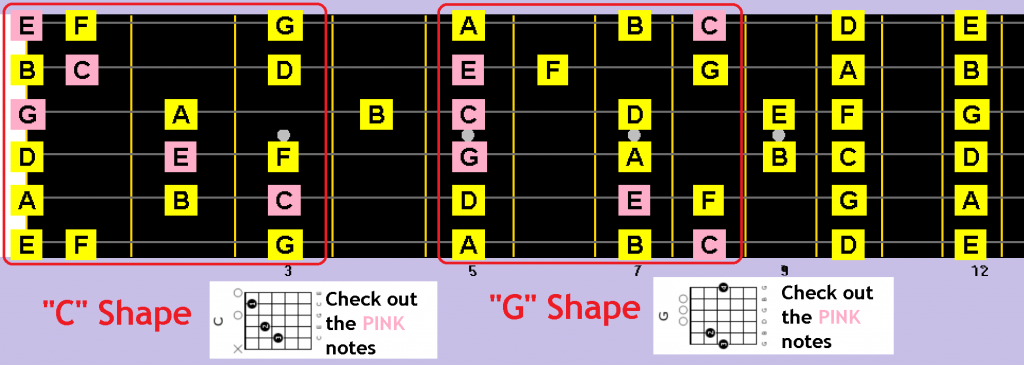
Yeah, that’s the 2 shapes.
The 1st box is the C major scale we learned before. The 2nd box is the G major notes “shape”, but we are playing them in C notes. So think in term of the shapes.
Here’s the same diagram with the C and G major notes we learned before:
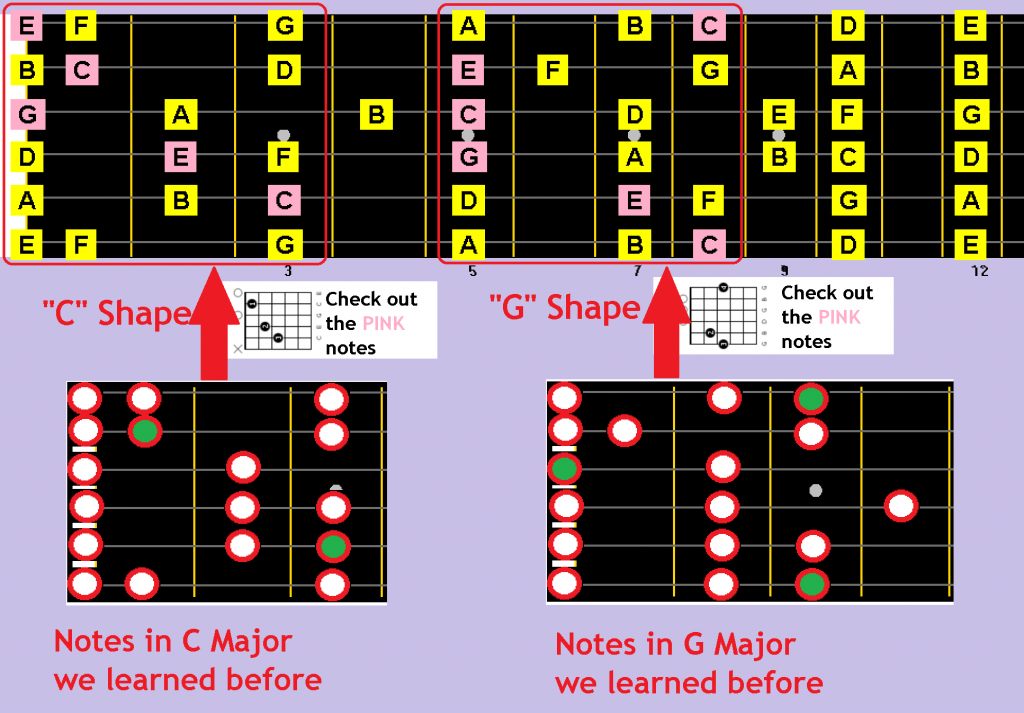
With that, adress the octave issues of the past 2 songs!
Click here to ask a question …
Let’s play today’s song at the correct octave
The blank part is the one supposed to have higher notes:
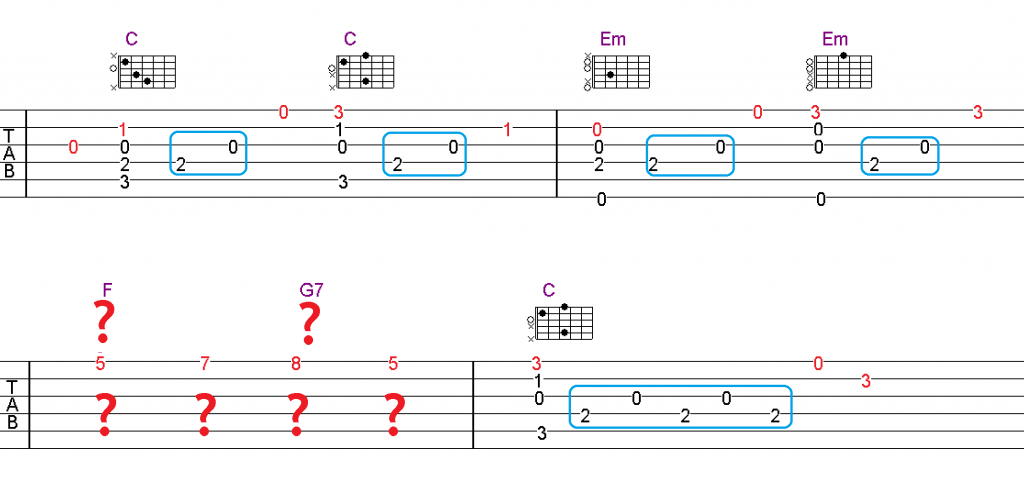
We have the notes and the chord symbols, let’s utilize what we had learned to get the chord shapes for those chord melody line.
If we analyse that part, they are in the “G” chape. Let’s play them in “G” shape!
Here you go:
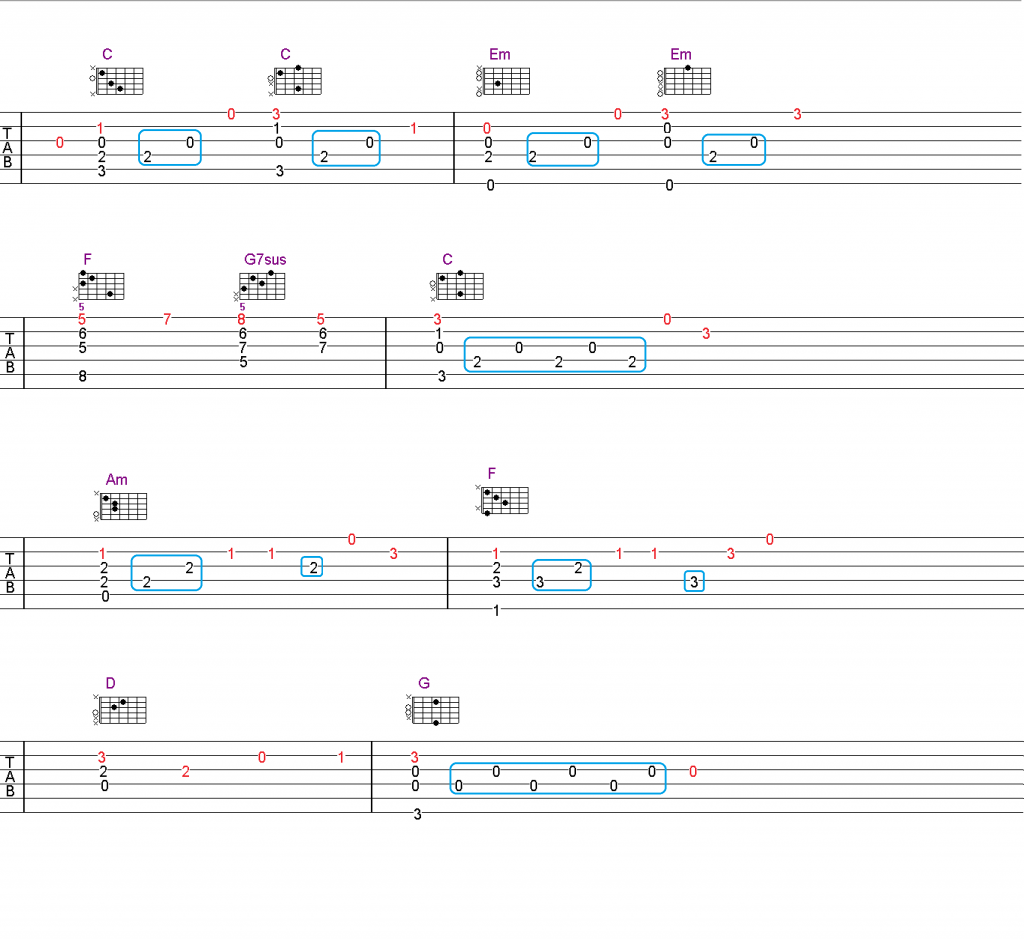
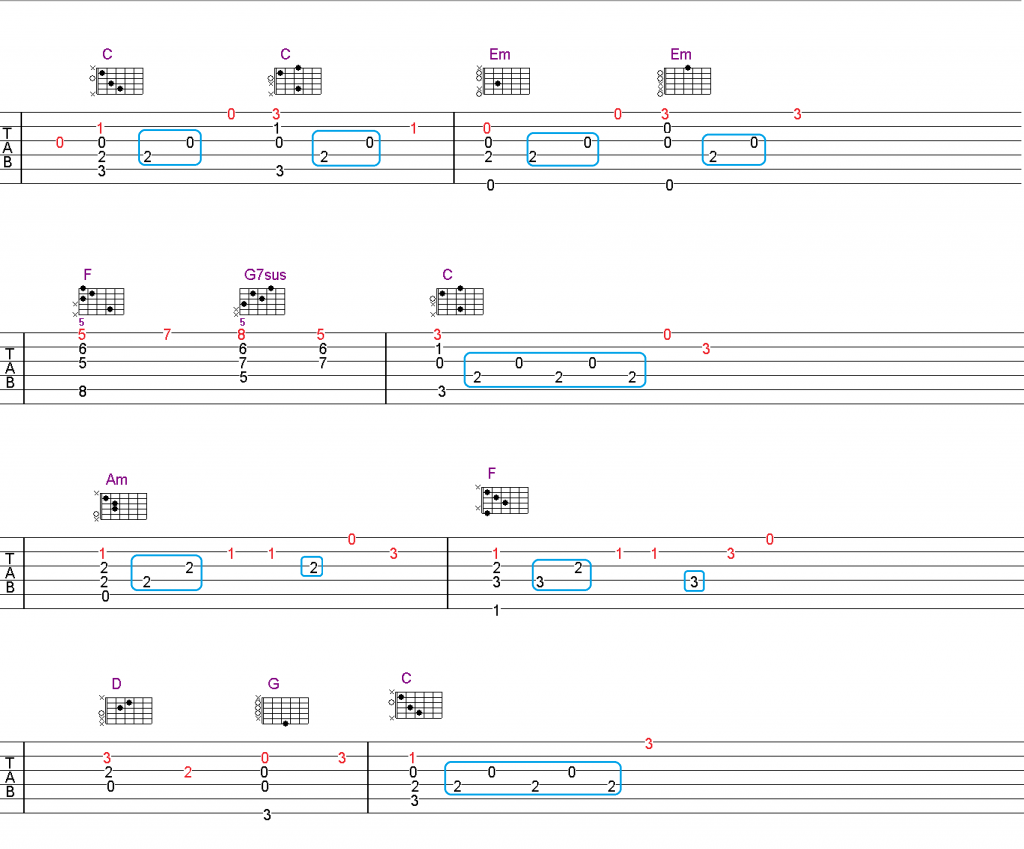
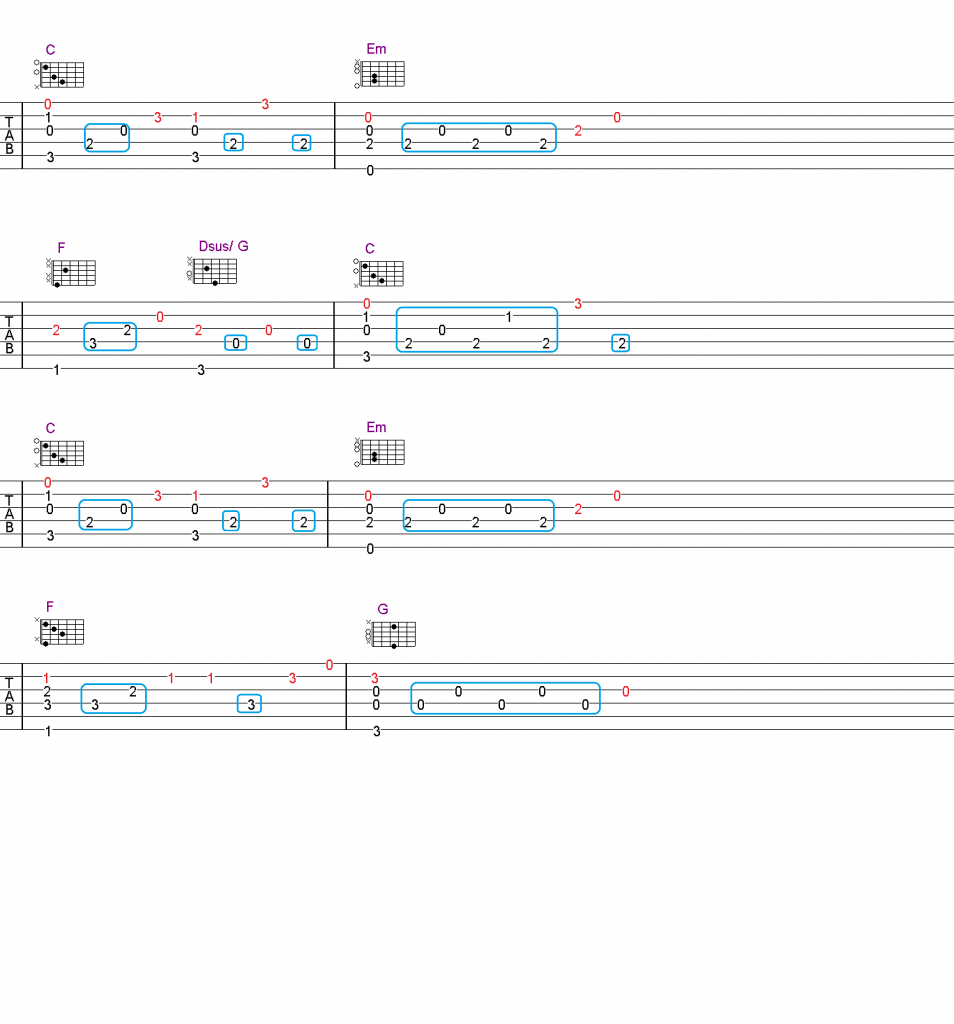
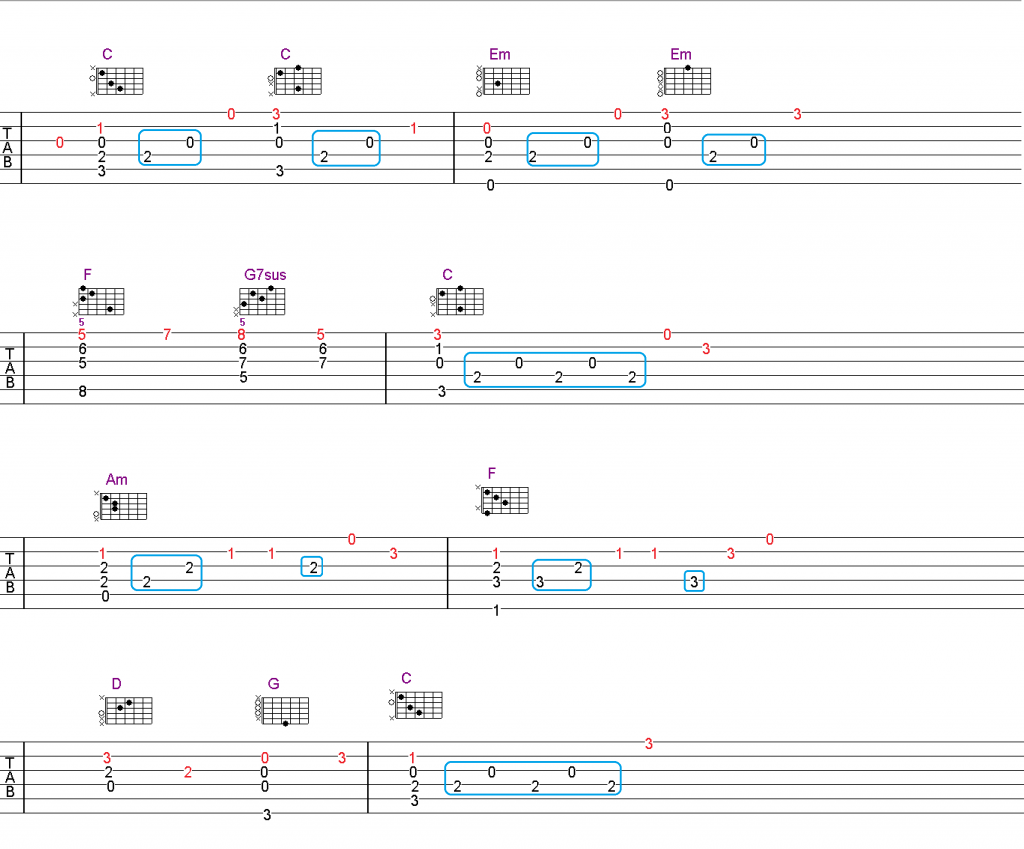
Click here to ask a question …
For “Can’t Help Falling In Love”
Fixes for last week song:
